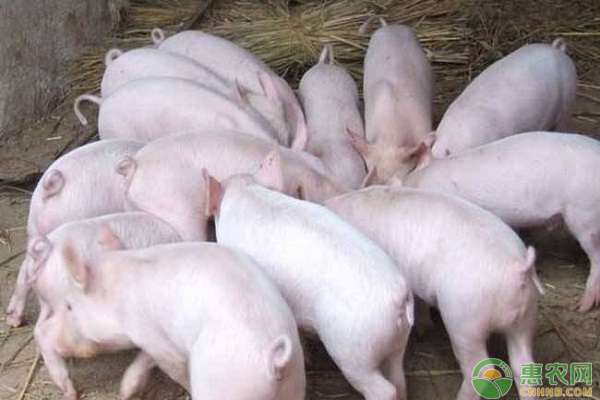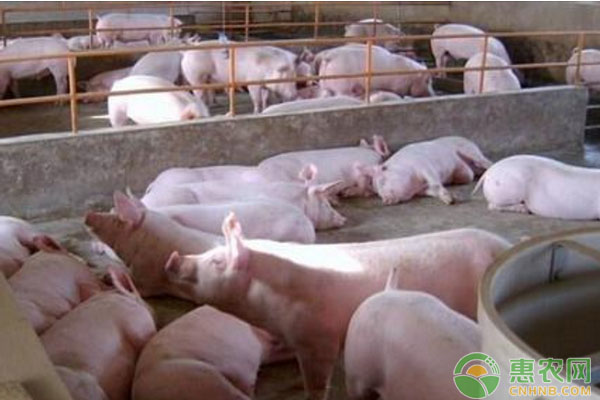Many pig farmers say that the management of disease in pig farms should be "prevention first, anti-healing treatment". The understanding of this sentence is limited to the addition of veterinary drugs or antibiotics to the feed to prevent swine disease. Is it really simple to prevent pig disease by adding some medicine to the feed? In fact, many diseases can not solve the problem. Take the recent epidemic of African swine fever, there is no drug that can cure or prevent it. Obviously, it is impossible to prevent and control African pigs by adding drugs. .

According to the three basic conditions of infectious disease epidemic (infection source, transmission route and susceptible animals), to effectively prevent and control a disease or epidemic can only eliminate the source of infection, cut off the transmission route and protect susceptible animals. Adding drugs to pigs' feed or drinking water can only be regarded as one aspect of improving the disease resistance of pigs to protect susceptible animals. Obviously, it is impossible to protect susceptible animals by disease or epidemic, just like now. The pig farm feeds the pigs with antibiotics for many years, although it can play a certain role in preventing some diseases. However, when the strong infectious diseases such as blue ear and viral diarrhea occur, the antibiotics damage the liver and kidney functions of the pigs. The impact on the immunity of the herd may actually aggravate the clinical symptoms of the disease.
Therefore, in the prevention of diseases, pig farms must not only pass drugs, but also need to strengthen the following work:
isolation
Isolation refers to the method of keeping a herd in a range that is conducive to epidemic prevention and production management. At present, foreign pig farmers believe that isolation is one of the most effective methods to prevent and treat pig diseases. Isolation needs to pay attention to the following points:
1. Site selection. At the beginning of the construction, the pig farm should consider the influence of topography, wind direction, water source and sewage on pigs. In addition, according to the requirements, the farm should be away from other animal breeding places, residential areas, villages, water sources, slaughterhouses and meat products. The factory, and the farther away the better, the theoretical need to maintain a distance of 500-1000 meters.
2. On-site layout. Isolation of pig farms not only refers to the isolation of the farm from the outside world, but also the isolation inside the farm. The production area, living area and management area should be strictly separated. In addition, pigs at different stages should also be kept in isolation.
3. Isolation system. In order to implement the isolation facilities, a perfect isolation system is needed, such as: staff activities, management of vehicles entering and leaving the farm, isolation of sick pigs, isolation of newly purchased pigs, and management of tools in various production areas.

disinfection
An important technical measure to kill and reduce pathogens in the production environment through chemical, physical and biological means of disinfection. Corresponding to the means of prevention and control of infectious diseases, disinfection is also recognized as one of the most commonly used measures in disease prevention and control.
1, daily disinfection. Including disinfection of production areas and pigs, disinfection of the delivery room and clinical sows before the clinic, disinfection of the surgical site when the piglets are broken, castration, and disinfectant in the disinfection tank.
2, instant disinfection. When some pigs are infected, it is necessary to immediately strengthen the disinfection of the infected pig house to control the epidemic in the bud.
3. Thorough disinfection. Including the disinfection of all-in and all-out pig houses, thorough disinfection of the whole field or part of the pig houses is required before the outbreak or after the release of the blockade.
Insecticide and rodent control
Mosquitoes and mice not only carry a variety of pathogens, but some pig diseases are transmitted by wild animals such as mosquitoes or mice. Insecticides and rodents can clear the source of infection and cut off the route of transmission, thus achieving the purpose of preventing pig diseases.
1, killing insects. Insecticide mainly refers to the killing of arthropods such as mosquitoes and flies. Mosquitoes can be killed by igniting mosquitoes, mosquito killers, and larvae in pig feed.
2, rodent control. Rodent control can be performed by regularly throwing bait with rat poison. Currently, professional rodenticides are professionally eliminated against the rats in the farm.
Immunization vaccine
At present, there are more or less vaccines available for swine diseases. In order to achieve good vaccine immunization effects, in addition to selecting reliable vaccines, reasonable vaccine immunization procedures and correct vaccine immunization sites are very important.
1. Formulation of immunization procedures. Specific vaccine immunization procedures can be formulated with reference to the article "Developing a set of vaccine immunization procedures that can make the farm a rock-solid, the following principles must be followed! 》
2. The correct vaccine site. Most vaccines use the intramuscular injection of the neck, but some vaccines have better effects on the corresponding immune sites. For example, the mycoplasma vaccine is better for intrathoracic injection, and the E. coli vaccine and viral diarrhea vaccine are used. better.
3. In addition, the effectiveness of the vaccine is also affected by factors such as the storage and transportation of the vaccine, the quality of the vaccine itself, and the health of the herd during the immunization.

Drug prevention
After isolation, disinfection, insecticide and rodent control, and vaccine immunization work, supplemented with drug prevention measures, such as “three bottles of health care†in sow production, can promote postpartum recovery of sows and prevent postpartum breasts in sows. Inflammation, inflammation of the uterus. The "three-needle health care" of piglets after birth can effectively prevent bacterial diseases such as diarrhea, Haemophilus parasuis and streptococcus in piglets after weaning. In the high-temperature and high-humidity seasons each year, pig erysipelas is highly developed in some areas. In addition to the vaccine immunization method, sensitive antibiotics such as amoxicillin can be added to the feed for prevention. In summer, mosquitoes and mosquitoes increase, blood-borne diseases (such as Eperythrozoon, pig toxoplasmosis, etc.) will be high, and can be added to the feed at the end of May or early June each year to prevent and control the drug. The occurrence of the disease.
Pharmaceuticals finish product is the main product of Ningbo Voice Biochemic Co., Ltd.. The product line covers almost all the dosage forms, including tablets, capsules, small volume injections, infusions, eye/ear drops, creams and ointments, powder for injections and Aerosols. All finish products are produced in the GMP standard workshop.
Our
pharmaceutical finish products are registered in the countries of Asia,
Africa and South America under our own brand: VOICE, which is have won a
high reputation in the marketing countries. Together with our own trade
mark, the packaging of all pharmaceuticals finish products are well
designed according to the requirement of different market..
Cardiovascular Drugs,Antipyretic Analgesics,Antiviral And Antibiotics,Finished Pharmaceutical Products
NINGBO VOICE BIOCHEMIC CO. LTD , https://www.medicine-voice.com